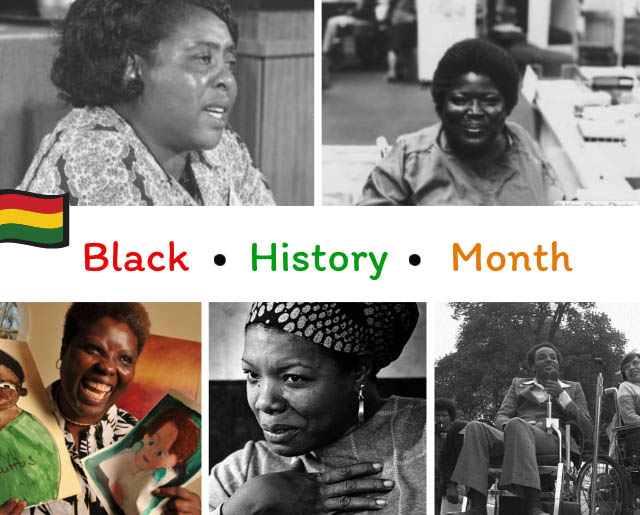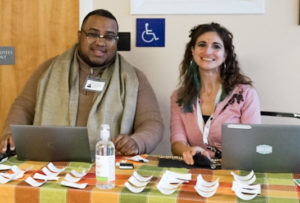February is a time to honor and celebrate Black Americans who’ve made an undeniable impact in moving us forward as a nation. Often left out of the history books are the contributions of Black persons with disabilities. When their stories are told, rarely do they mention their disability.
Many people know that Harriet Tubman led enslaved people to freedom through the Underground Railroad, but did you know she was also disabled?
Black History is intertwined with Disability History. In fact, the Disability Rights Movement was influenced by the Civil Rights Movement! Several Black leaders played a critical role in both movements.
Here are a few examples:
Brad Lomax
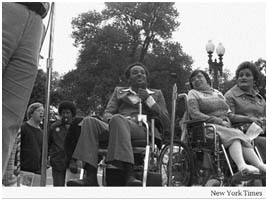
When Brad was in college, he developed multiple sclerosis. As a wheelchair user, he encountered barriers every day accessing public services and spaces.
Brad wanted to ensure the Black community, especially those living with disabilities, had better access to social services. He learned about the Berkley Center for Independent Living and approached its director, Ed Roberts. Brad proposed they combine their efforts, and soon after, the East Oakland Center for Independent Living was formed.
In 1977, Brad, along with a group of disability rights activists, occupied a federal building in San Francisco for 25 days, pressuring the federal government to sign regulations to enforce Section 504 of the Rehabilitation Act of 1973. Brad enlisted the support of the Black Panther Party who brought hot meals and supplies to the demonstrators each day. Brad’s activism helped bridge the Civil Rights and Disability Rights movements.
Johnnie Lacy
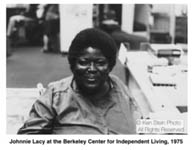
After getting diagnosed with polio, Johnnie became paralyzed at 19. In college, she frequently faced discrimination. College administrators told her she couldn’t be a speech therapist because of her disability, and she was excluded from her graduation ceremony.
At a time when few legal protections existed for people with disabilities, Johnnie’s passion for disability rights was fueled. She quickly became a leader in the Independent Living Movement and helped found the Berkeley Center for Independent Living.
Throughout her life, Johnnie educated and engaged communities in conversations about racism, ableism, and intersectionality. Johnnie often spoke about feeling excluded from the Black community because she had a disability and from the disability community because she was a person of color. The conversations she ignited within the disability community and beyond continue today as we work to dismantle systemic oppression in its various forms.
Fannie Lou Hamer
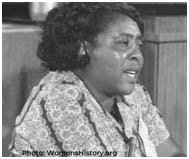
“I’m sick and tired of being sick and tired.”
During a pivotal moment in Civil Rights history, Fannie said these powerful words at the 1964 Democratic National Convention in front of a televised audience, and the nation paid attention.
At 45 years old, Fannie became a tireless community organizer and passionate advocate for Civil and Voting Rights. Deeply committed, Fannie put her own body in harm’s way for racial justice. During a protest in 1963, Fannie was arrested and beaten so badly by local law enforcement that she became permanently disabled.
Fannie is remembered as one of the most powerful voices of the Civil Rights Movement and a key contributor. Her incredible legacy is memorialized through the numerous parks, schools, community centers, and organizations named after her.
Maya Angelou
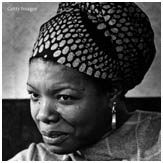
As a child, Maya developed selective mutism. For five years, she did not speak.
Despite experiencing childhood trauma, an anxiety disorder, and racism in America during segregation and Jim Crow, she persevered and became one of the most influential voices in the world, using her voice to advocate for people of color and women.
Maya became an internationally known author, poet, singer, professor, and civil rights activist. Over her 50-year career, she received several prestigious awards, including two NAACP image awards, a Pulitzer award, and a Presidential Medal of Freedom. Maya passed away in 2014, but her powerful words and legacy live on.
Lois Curtis
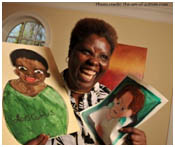
We owe Lois a debt of gratitude for the landmark civil rights case, Olmstead v. L.C (1999).
Lois had developmental disabilities and often wandered away from home as a child. Her family struggled to adequately care for her, and she spent most of her adolescence in and out of institutions.
At 19, Lois contacted the Atlanta Legal Aid Society. Lois was living in a hospital and wanted help getting back into the community. They filed a lawsuit against the state of Georgia, arguing discrimination under the Americans with Disabilities Act of 1990. They won their case, but the state of Georgia appealed it to the U.S. Supreme Court. In 1999, the Supreme Court ruled in favor of Lois.
Because of Lois’ advocacy, people with disabilities are now legally protected against unnecessary institutionalization and more options for home and community-based services exist.
As we celebrate Black History Month, let’s remember the contributions that Black people with disabilities have made. The Disability Rights Movement would not be the same without them. They’ve made positive effects on transportation, education, housing, employment, and many other issues. We encourage you to research other Black leaders and see if they had, or have, disabilities that history has ignored.

